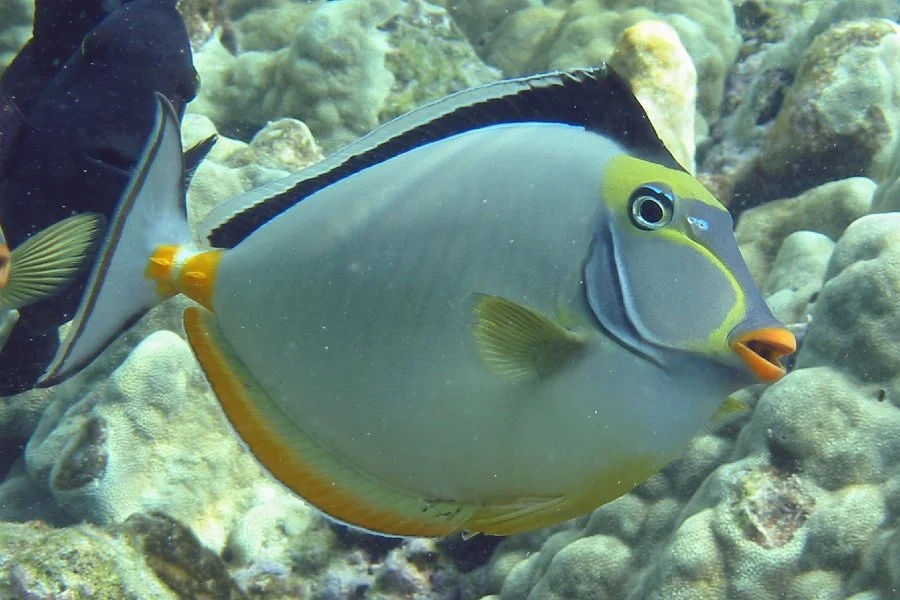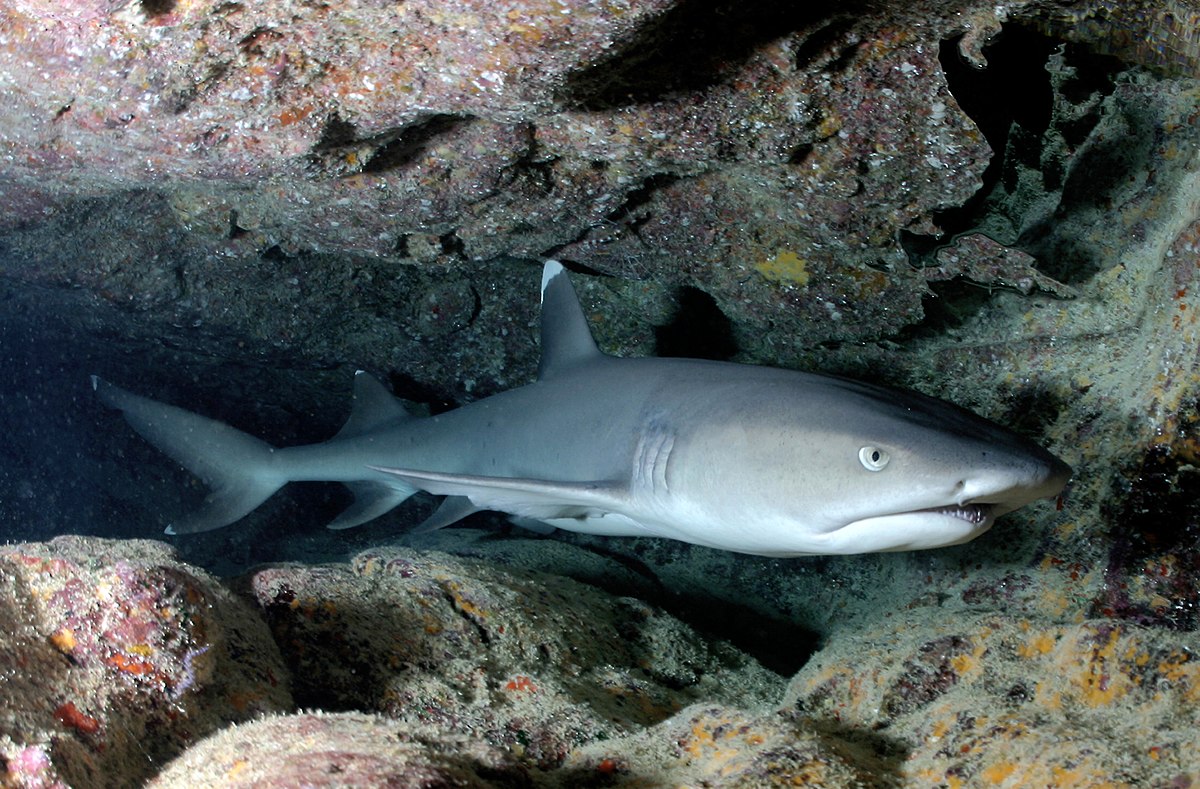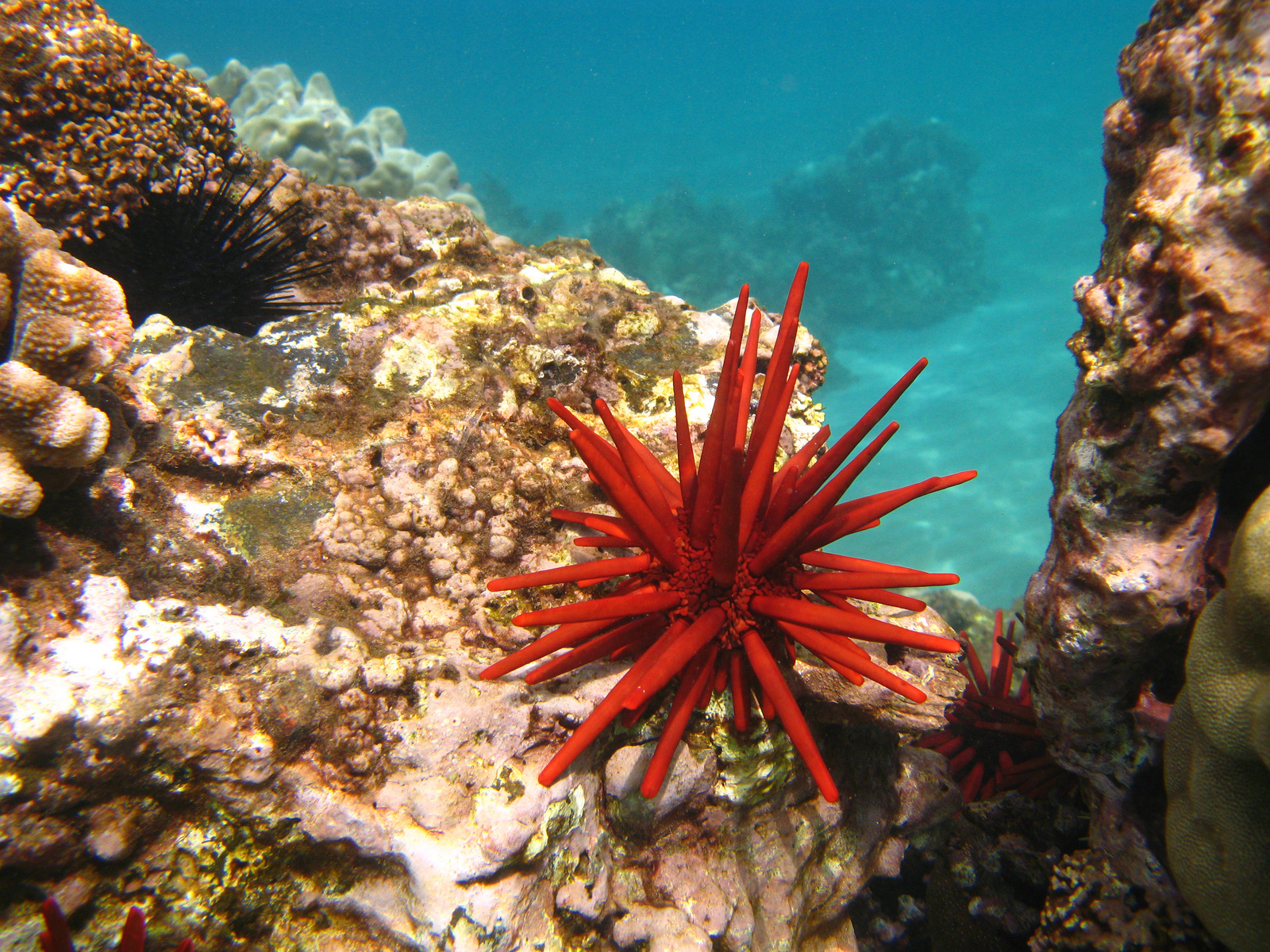Molokini Fish Guide
There are an estimated 250 species of fish at Molokini, many of them being native to the area. Molokini is also home to an estimated 100 species of algae and 38 hard coral species. If you are lucky, you may also see moray eels, octopus or a whitetip reef shark. See below for some of the most common fish and marine life you will see on a Molokini snorkel.
HUMUHUMUNUKUNUKUAPUAA
Hawaii’s State Fish. This fish is from the Triggerfish family. It has a snout like a pig which gives it the ability to blow air from its mouth to sift through the bottom sand to get to the algae that it likes to eat. This fish is a loner and it does not like to be crowded. View this beautiful fish from a distance.
Yellow Tang
This fish is bright yellow and grows up to 20CM. It is bright yellow by day and its body turns to a pale brown at night to camouflage its self from predators. This is one of the most popular aquarium fish. Most often seen in small schools, it is a social fish. It feeds on algae and has prickly spines on both sides of its tail (called a Tang) which it uses to defend its self from predators.
RACOON BUTTERFLY
Similar to the Moorish Idol, but is primarily Yellow with a black eye area. It has a distinctive white stripe right behind its eye- thus the nick name “Raccoon”. Their tails, unlike the Moorish Idol, are yellow. They feed on algae and small invertebrates, and are mostly seen in schools.
MOORISH IDOL
This fish is nick-named “Pirate Fish”. It has black, yellow, and white stripes and a protruding tubular snout. Is often confused with the butterfly fish, but it has a distinctive black triangular tail that sets it apart from other tropical fish. Often seen in small schools and in shallow reef waters
PARROTFISH
This fish gets its name because the beautiful blues, greens and oranges on its body resemble the feathers of a parrot, and it has several rows of teeth that form what looks like a parrot’s beak. They are often seen in small schools and feed on coral and algae.
BLUEFIN TREVALLY
This fish starts out small but can get as big as 4 feet long, and 95 pounds. They have blue fins and their body colors are beautiful shades of blue and green with a silver underbelly. They start off as reef fish in small schools, but eventually graduate to deeper waters as they grow in weight and length. If you see them in shallow reefs, they are very young.
YELLOW GOATFISH
This fish has a bright yellow - hued body with a horizontal red stripe and a triangular black fin. These fish are fast swimmers and are seen mostly in schools. They feed at night and play during the day.
ORANGE SPINE UNICORN
This fish has a grey body with yellow highlights. It has orange lips and a blue face mask. Its body is trimmed in orange, and black and it has a black triangular tail fin. These fish can grow quite large and are seen mostly in small schools in shallow reef waters when they are very young.
NEEDLEFISH
These fish are silvery, long, and skinny with a long, narrow, pointed mouth with lots of teeth. Most often seen swimming on or near the surface of the water. They are curious and they are known to jump out of the water when they are excited
TRUMPET FISH
These are long, skinny fish with colors that range for silver to blue. These are cousins to the Sea Horse, and their faces really do resemble their cousins’. They are reef dwelling, shallow water fish, most often seen at or near the surface of the water.
MORAY EELS
Eels do not have dorsal (side) fins so they look like swimming snakes. Their colors range from black, brown, blue, green, yellow, and white. They are more often spotted or have intricate multi-colored patterns. Eels hide in crevices and pounce on their unsuspecting prey as they swim by. They prefer shallow reefs because there’s plenty of places to hide. They dine on Squid, Octopus, and hard-shelled invertebrates.
SADDLEBACK WRASSE
These fish are only found in Hawaiian waters. This fish looks like it is flying through the water as it beats its side (pectoral) fins up and down in a quick flying motion. Beautiful Blue head and green body with an orange bar that looks like its wearing a saddle. Can be as long as 11 inches and is found mostly in small schools.
WHITE TIP REEF SHARK
This shark is much smaller than most of its cousins and is found mostly in shallow coastal reef-lined waters. And, unlike its cousins, it is mostly harmless. They are fearless and curious so they may come close to swimmers to check them out. Generally they range from 2 to 6 feet. And you can recognize them by the white tips on top of their fins.
RED PENCIL URCHINS
These urchins are a vibrant red and have many pencil-shaped spines that form their bodies. They can reach 10 inches in diameter. They are often found lodged in the crevices of shallow reefs. They dislodge themselves under the cover of darkness to feed and then find another spot to attach themselves to by morning.









![Needle-Fish].jpg](https://images.squarespace-cdn.com/content/v1/58f9b5a7ff7c501c955bca21/1541290597605-HQCMYMF930G8DD8HSXM3/Needle-Fish%5D.jpg)




